Abstract
An attempt to achieve an agreed set of priorities for research in occupational medicine was undertaken by the Delphi technique. Fifty three senior practitioners of occupational medicine in academe (25) and industry or government (28) were canvassed about their views and choices for priority activity. Forty six (86%) responded to the initial enquiry and 48 (91%) provided rank order choices from a second, more detailed questionnaire. The first priority for more research on the natural history of work related ill health identified musculoskeletal disorders of the back and upper limbs followed by asthma, accidents, skin disorders, vibration induced disease, suicide and depression, and finally hearing loss. The second priority area was audit and particularly the need for its use in occupational health screening procedures. Environmental impact of industrial activity was third with the community health effects being more important than individual health effects. Stress related disease was fourth with emphasis on risk factors. The fifth area was neuropsychological effects of work exposures particularly the need for more research on diagnostic tests. Other assorted areas of concern were the cost effectiveness of occupational health, risk assessment, reproductive hazards, the effects of pharmacological agents, and the development of biomarkers as early evidence of an exposure effect. The remarkable degree of unanimity on the issues and choices and the general agreement between physicians from academe and industry on what constitute the priorities warrants further discussion and positive action.
Full text
PDF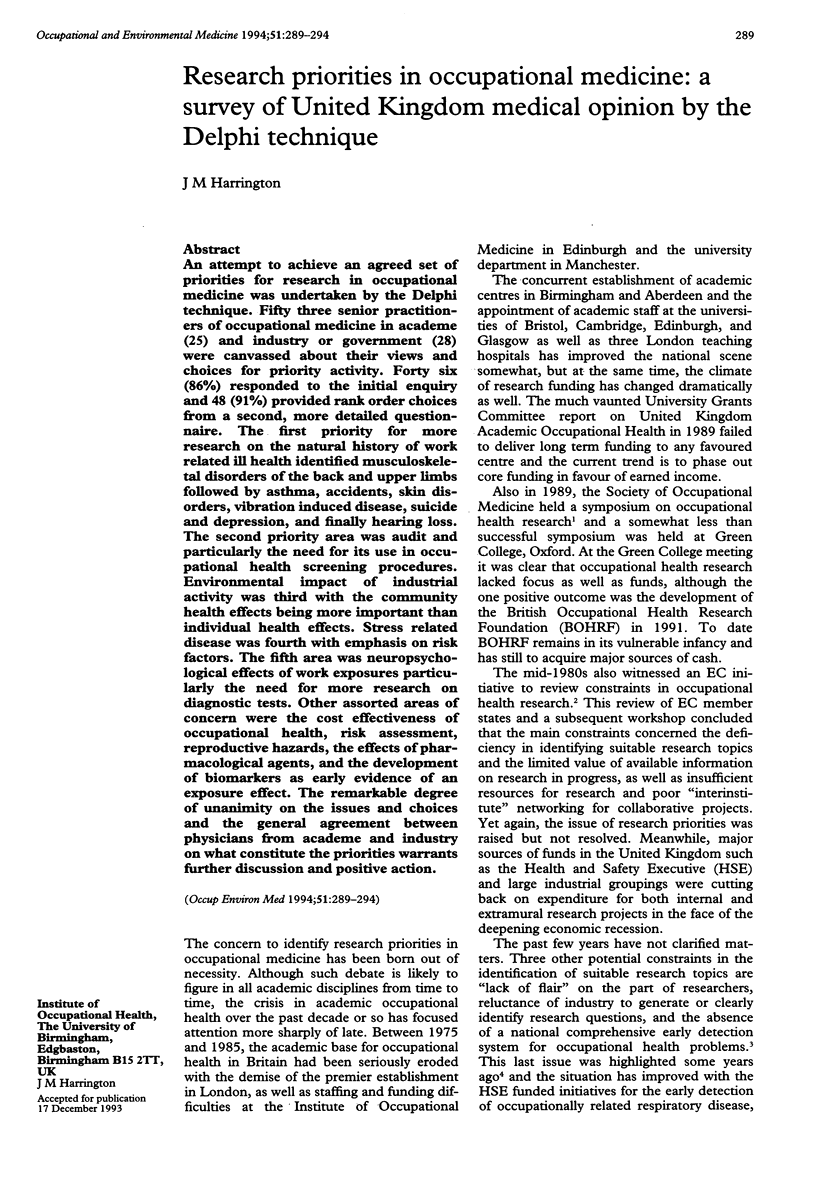
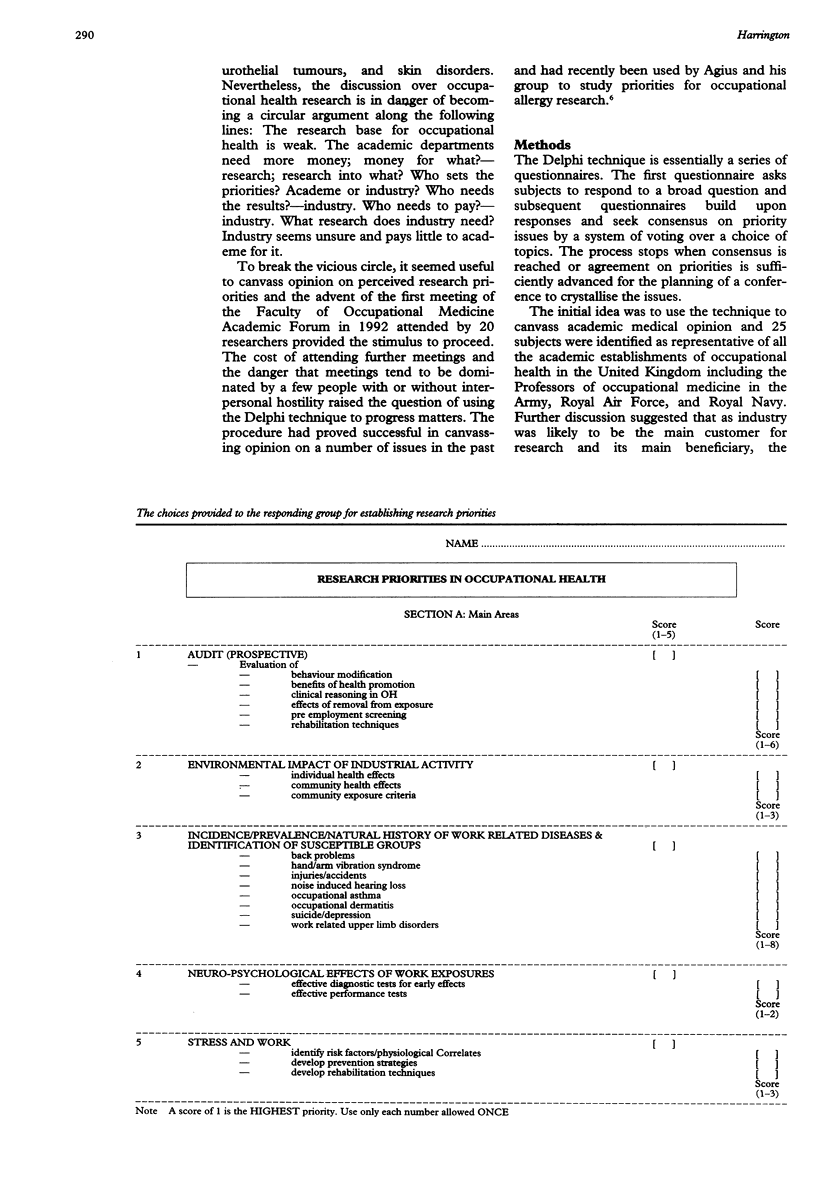
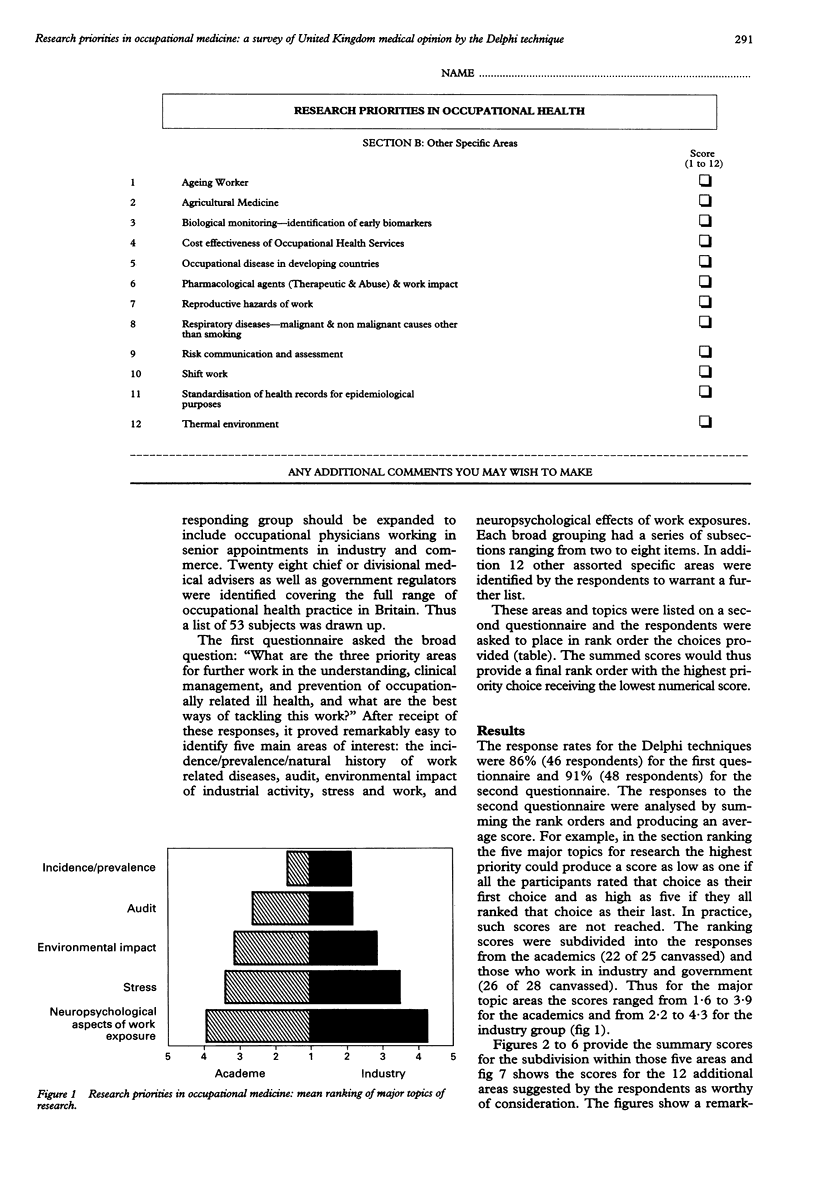
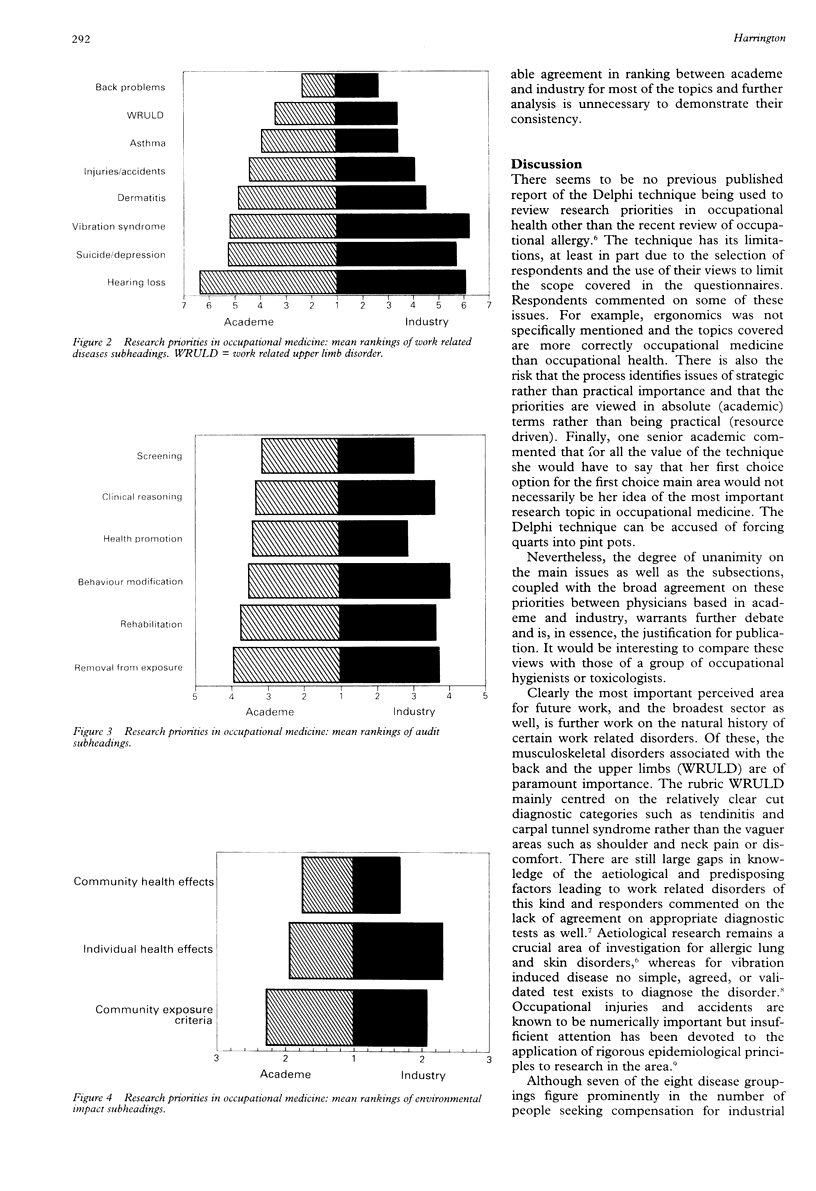
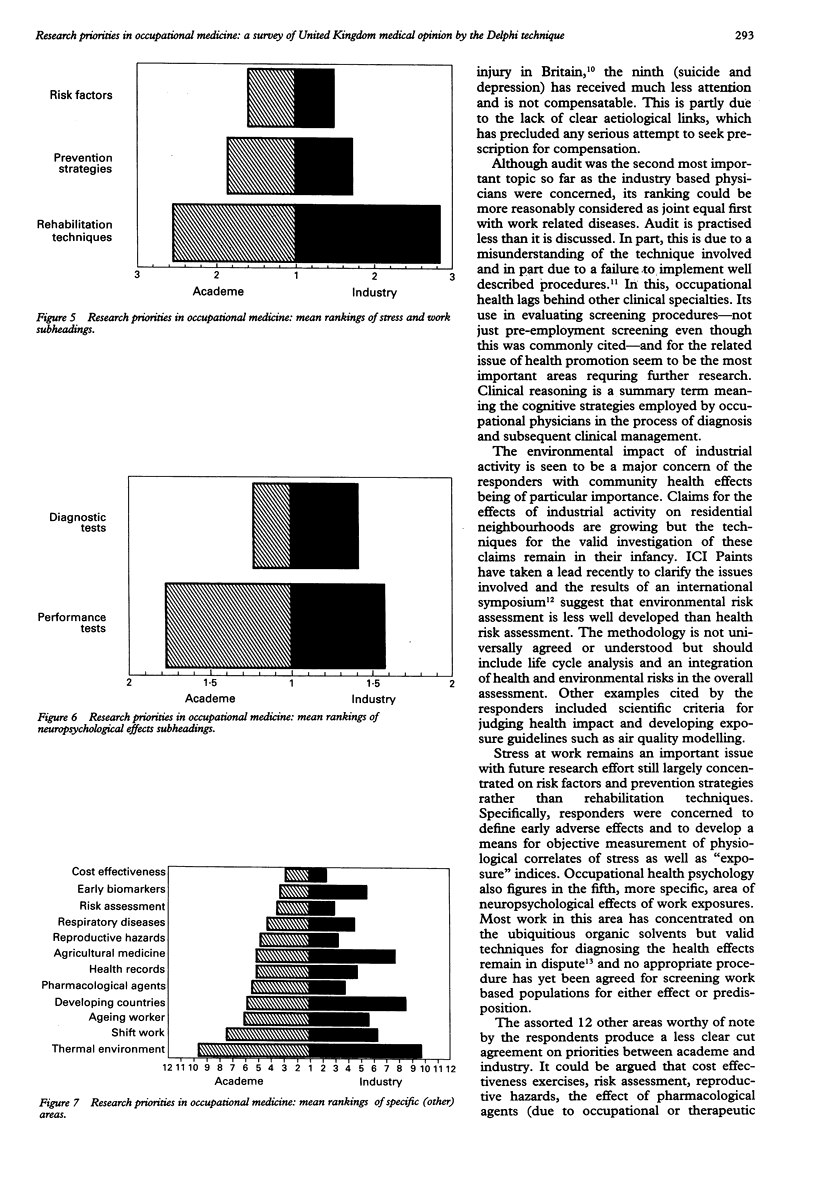
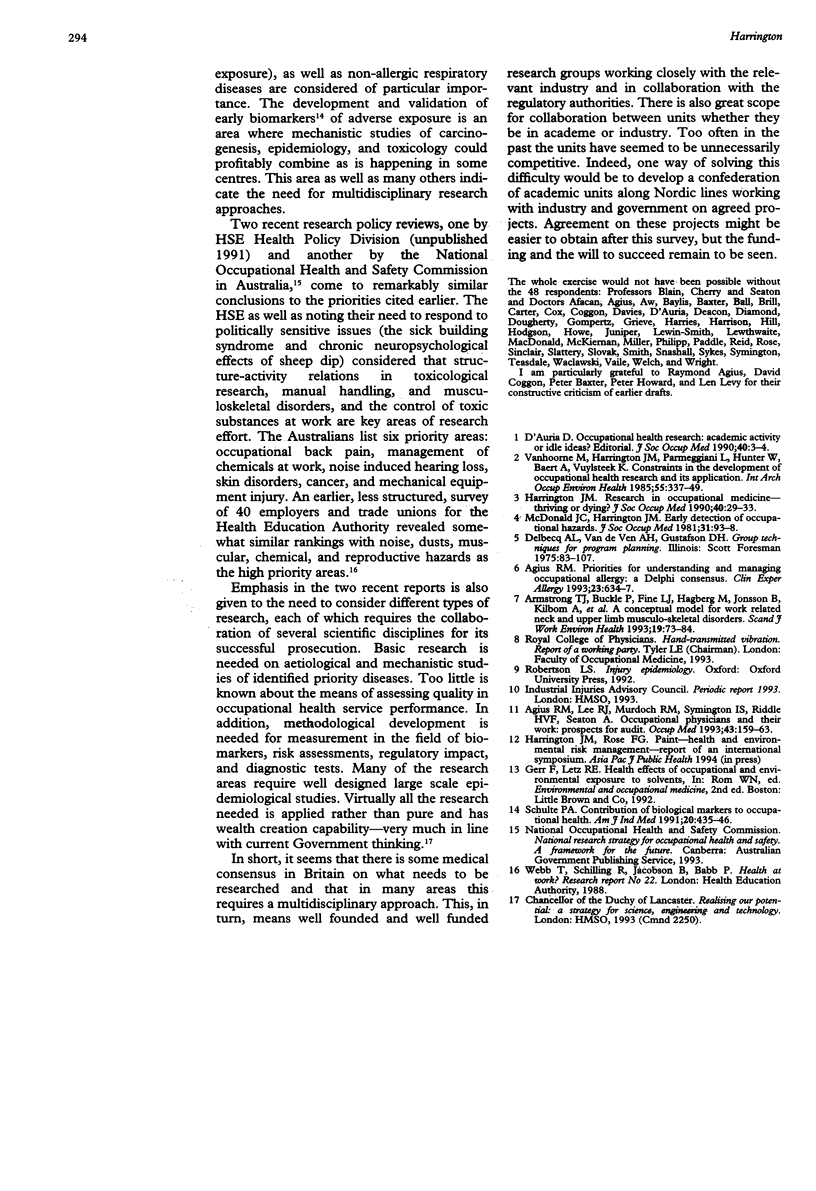
Selected References
These references are in PubMed. This may not be the complete list of references from this article.
- Agius R. M., Lee R. J., Murdoch R. M., Symington I. S., Riddle H. F., Seaton A. Occupational physicians and their work: prospects for audit. Occup Med (Lond) 1993 Aug;43(3):159–163. doi: 10.1093/occmed/43.3.159. [DOI] [PubMed] [Google Scholar]
- Armstrong T. J., Buckle P., Fine L. J., Hagberg M., Jonsson B., Kilbom A., Kuorinka I. A., Silverstein B. A., Sjogaard G., Viikari-Juntura E. R. A conceptual model for work-related neck and upper-limb musculoskeletal disorders. Scand J Work Environ Health. 1993 Apr;19(2):73–84. doi: 10.5271/sjweh.1494. [DOI] [PubMed] [Google Scholar]
- D'Auria D. Occupational health research: academic activity or idle ideas? J Soc Occup Med. 1990 Spring;40(1):3–4. [PubMed] [Google Scholar]
- Harrington J. M. Research in occupational medicine--thriving or dying? J Soc Occup Med. 1990 Spring;40(1):29–33. doi: 10.1093/occmed/40.1.29. [DOI] [PubMed] [Google Scholar]
- McDonald J. C., Harrington J. M. Early detection of occupational hazards. J Soc Occup Med. 1981 Jul;31(3):93–98. doi: 10.1093/occmed/31.3.93. [DOI] [PubMed] [Google Scholar]
- Schulte P. A. Contribution of biological markers to occupational health. Am J Ind Med. 1991;20(4):435–446. doi: 10.1002/ajim.4700200402. [DOI] [PubMed] [Google Scholar]


